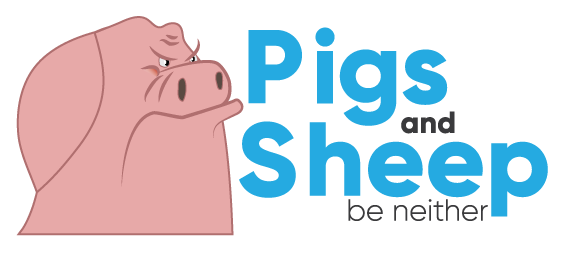San Francisco, the woker-than-thou epicenter of all things progressive, just broke new ground by banning the sale of e-cigarette, aka vaping, products. Ironically, you can still buy actual tobacco cigarettes in San Francisco, and buy them more cheaply than in some other “woke” cities, including New York. Even more ironically, recreational marijuana was legalized in California three years ago.
What’s behind the vaping ban, then?
Five years ago, New York City banned vaping everywhere tobacco smoking was banned. This ban mirrored the tobacco restrictions that were put in place in 2002, which prohibited smoking in bars, restaurants, and other places of public accommodation. That restriction was an expansion of a law that severely restricted the spaces that restaurants and bars could permit smoking. Both were justified as matters of public health, or more specifically, the protection of non-smokers from the effects of second-hand smoke. That those effects have been greatly overstated is yesterday’s battle, and not really germane to the matter at hand today, other than as a rationale for government infringement of individual rights.
The public health rationale doesn’t hold water in regard to vaping bans. While there are some reports that vaping exhalations contain residual nicotine and other substances, it’s almost entirely water vapor, and there isn’t much out there to support a conclusion of proximate risk from vapers – and certainly not at the level alleged for second-hand tobacco smoke. Moreso, an outright ban on sales precludes people from vaping in places they can smoke tobacco or pot, unless they delve into the black market or go outside city limits.
So, if not the usual reason, why?
Purportedly, because vaping is popular among minors. Fine. Ban sales to minors. Oh, wait – that’s already the case. Does the ban not work? Hmmm… let’s ponder that. Bans don’t work, let’s do more of them!
I agree with prohibitions on minors vaping. Ditto for smoking anything else, and drinking alcohol, and entering into contracts, and taking on debt, and serving in the military, and voting, and a host of other things. Whether the age of majority should be eighteen, twenty-one, or something else is a debate for another day. We have one now (several, but don’t get me started…), and it is eighteen for tobacco products. It’s sensible to limit vaping, since it delivers nicotine, to the same age. Enforcement? Yeah, it can be a problem, but that comes with the territory.
Government uses difficulty of enforcement or the problem cases all the time as an excuse to broadly infringe liberties. Not every drinker is a drunk, or a danger to others, but it banned alcohol anyway. Not every drug user is an addict, or a danger to others, but it bans drugs anyway. Not every soda drinker is obese or diabetic, but it tries to deter the behavior via taxation. Not every gambler is reckless or an addict, yet it prohibits casino games (oh, wait – gambling’s fine as long as the State gets its taste of the action).
Kids are vaping? Increase the fines for selling to kids, and devote more resources to dealing with that. Don’t declare that no one can vape, especially when other forms of inhaled recreation are legal.
But, I suspect there’s more to this story than the issue with minors’ access. As I blogged five years ago, New York City’s ban on vaping seemed born more of “visual pollution” than any real concern over public health. Already, tobacco smokers were made pariahs, forced to congregate in clustered circles outside of buildings and far from doorways. I’ve never smoked and never will. I hate being around smoking, and I find it visually distasteful. But, my personal preferences are not just cause for policy, nor are anyone else’s. And yet, that’s the most logical conclusion I could draw at the time for why the city got so aggressive with vaping.
Now, it may actually be the case that the people behind this e-cigarette ban are actually health crusaders. There are parallel efforts to ban flavored tobaccos and menthol cigarettes, again under the premise that these products are targeted at kids. But, vaping is broadly considered a safer alternative to tobacco, and it’s a means for smokers to wean themselves off tobacco while satisfying both their chemical and ritualistic cravings.
This action reeks (no pun intended) of “doing something,” of a giant virtue signal, and a “safe” response, because unlike pot legalization, which has a feel of being “progressive,” tobacco remains a frowned-upon product, and vaping is associated with tobacco.
Is smoking and vaping among minors a problem? I don’t know how much of one, but I’ll accept that it is. Smoking isn’t good for you, and vaping, which delivers nicotine, isn’t for kids either. But, this is just another example of Penn Jillette’s observation about government in action:
Every time something really bad happens, people cry out for safety, and the government answers by taking rights away from good people.
He was talking about terrorism, but the blueprint is the same. Control those who aren’t doing anything wrong as an illusion of “doing something” and as an excuse for failing to focus on the narrower, more difficult problem.

Active Comment Threads
Most Commented Posts
Universal Background Checks – A Back Door to Universal Registration
COVID Mask Follies
When Everything Is Illegal…
An Anti-Vax Inflection Point?
“Not In My Name”
The Great Social Media Crackup
War Comes Through The Overton Window
The First Rule of Italian Driving
Most Active Commenters